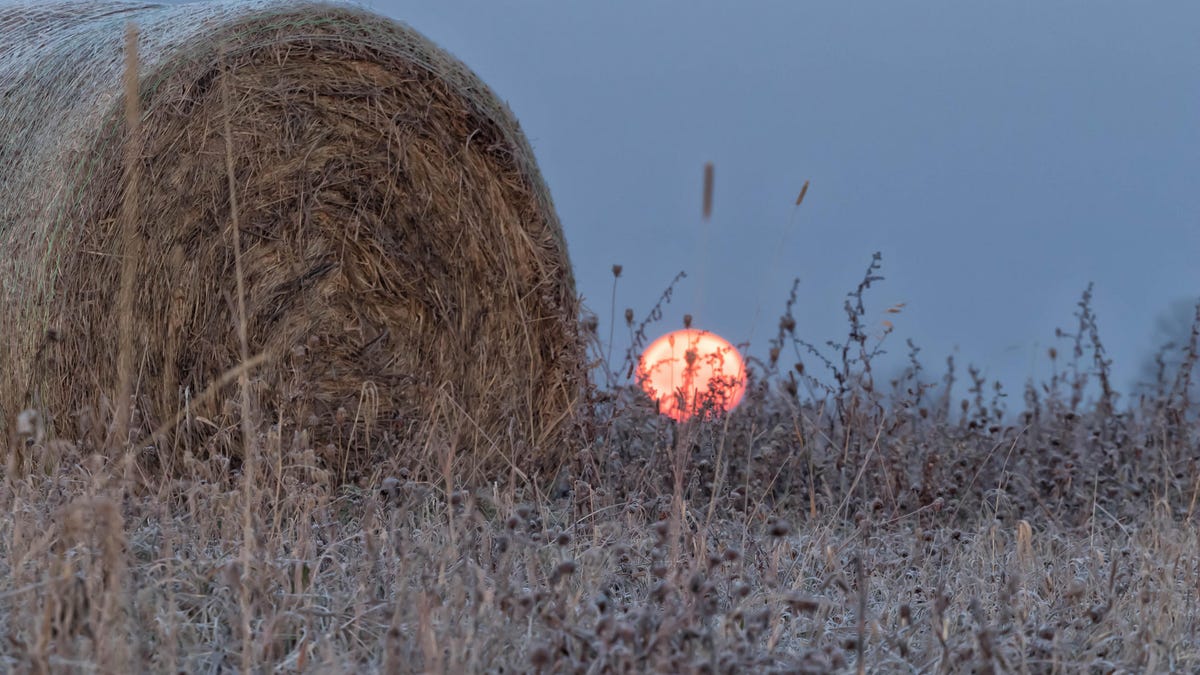How to See the Full Harvest Supermoon Rise Tonight
The last supermoon of 2023 officially arrives Thursday and Friday. This one will help anyone in the Northern Hemisphere say goodbye to summer.

A bucolic setting for the supermoon rising in this 2017 photo from Pennsylvania by Mike Vosburg.
If you're in Europe, the Americas or Africa, make a plan to get outside around sunset on Thursday. The rest of the world should plan to do the same Friday to catch the rise of a notable full moon.
Traditionally, the full moon that takes place nearest to the northern autumn equinox has been known as the harvest moon in Europe and North America. For centuries, the bright moon's light was welcomed as it helped farmers continue to harvest their bounty beyond sunset.
In 2023, the harvest moon may be up to 30% brighter because this particular full moon is also a supermoon, or as astronomers put it more scientifically (and arguably more poetically), at perigee syzygy. No matter what you call it, this is when the moon is full and also at its closest point to Earth in its oval-shaped orbit.
The result is a full moon that can appear as much as 15% larger in the sky than a typical full moon, reflecting around an additional third more light from the sun into the night sky.
This year we get four supermoons in succession in only three months, starting with one in early July, followed by two in August and ending with this supermoon late tonight into tomorrow. It's actually not that unusual for supermoons to come all in a row like this. It will happen again next year with four supermoons between August and November.
How to see it
A moon at perigee syzygy is one of the easiest and most convenient celestial events to experience first hand. In most cases, it will be as simple as venturing outside around sunset and turning your back to the setting sun. The full moon will be rising to the east, 180 degrees in the opposite direction, although the exact moment depends on your location and the local topography.
Not only does this twilight moment typically fall at a part of the day that's a little less hectic and more comfortable, temperature-wise, it's also the best time to see a supermoon in the night sky. This is due to something called the "moon illusion," which causes the full moon to appear larger when it is closer to the horizon.
So combine the effect of the moon illusion with the size boost of perigee syzygy, and the super harvest moon this week is set to be pretty spectacular as it rises shortly after sunset.
David Yu grabbed a particularly huge-looking supermoon behind the San Francisco skyline in this 2017 photo taken from Alameda island across the bay.
Plus, depending on what's happening in the atmosphere near you, moonrise is the time when the full moon is most likely to be colorful. Particulates in the air can make the moon appear more red or orange, and those are likely to linger lower in the atmosphere, meaning the moon is more colorful closer to the horizon. Unfortunately, a colorful moon can also mean that there's more smog, smoke, dust or other unpleasant things in the air.
More expert skywatchers can also try to spot three planets in the sky with the moon Thursday night into Friday morning -- Jupiter, Saturn and Mercury. The bright supermoon will make them a bit harder to find, but apps like Stellarium paired with binoculars or a telescope can help.
So book some time as the sun gets low in the sky Thursday or Friday around dinner time. Head outside and watch it set in the west and then flip around to watch the biggest moon anyone on Earth will see until next August.

